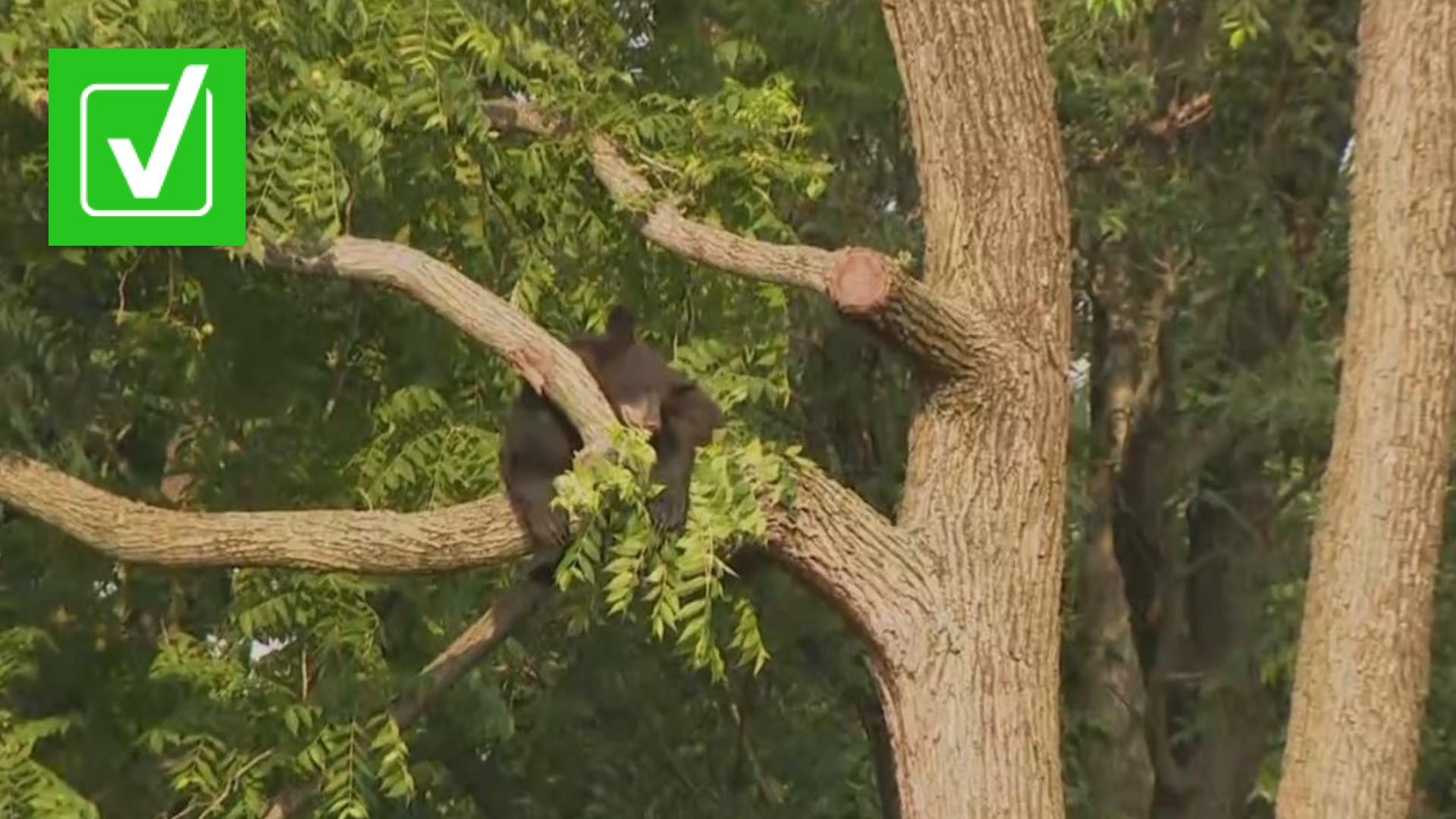WASHINGTON, D.C., USA — It is hard to miss a bear when it walks through a busy neighborhood. And after word about a bear seen in Northeast D.C. spread on social media Friday morning, a large crowd gathered to watch it after it climbed a tree.
But there may be something about their size that makes them even easier to see.
QUESTION
Are bears that spend time in cities larger than bears that stay in rural areas or the countryside?
SOURCES
- Audubon Society
- Carnivores, urban landscapes, and longitudinal studies: a case history of black bears
- Growth and reproduction by young urban and rural black bears
- Foraging ecology of black bears in urban environments: guidance for human-bear conflict mitigation
- Individual and population fitness consequences associated with large carnivore use of residential development
ANSWER
Yes, black bears that spend time in urban areas are bigger than those that do not, but they also get pregnant earlier and die younger.
WHAT WE FOUND
Research shows that bears seen in cities are much larger than their countryside counterparts.
A study published in 2021 tracked bears in North Carolina and Virginia. It found that two-year-old bears that spent time in urban settings were on average almost twice as heavy as those that did not. The authors also reported that female bears in urban settings reproduced at a younger age because their added weight allowed their bodies to mature faster.
In a study about bears' eating habits, researchers from Colorado said bears use nuts and berries to store calories to help them hibernate. "But mast crops can fail due to unfavorable weather conditions, e.g., late-spring freezes and droughts, or disease outbreaks," they wrote, "resulting in bears seeking alternative food sources. Use of anthropogenic food resources can lead to behavioral adaptations and changes to bear ecology and result in increased human-bear conflict."
Another study of bears in Nevada had similar findings. It added that bears living near cities had shorter life expectancies, so even though they reproduced earlier, their population shrank while the population of bears in rural areas remained stable. The authors reported that some bears were killed because of safety concerns coming from interactions with people, while others were killed by automobiles.

